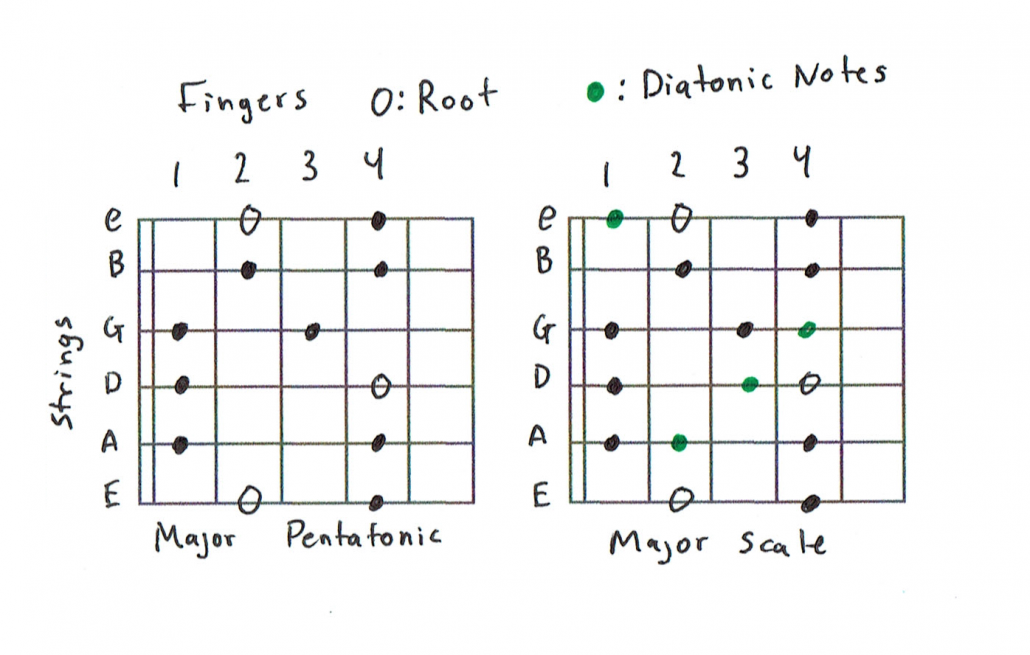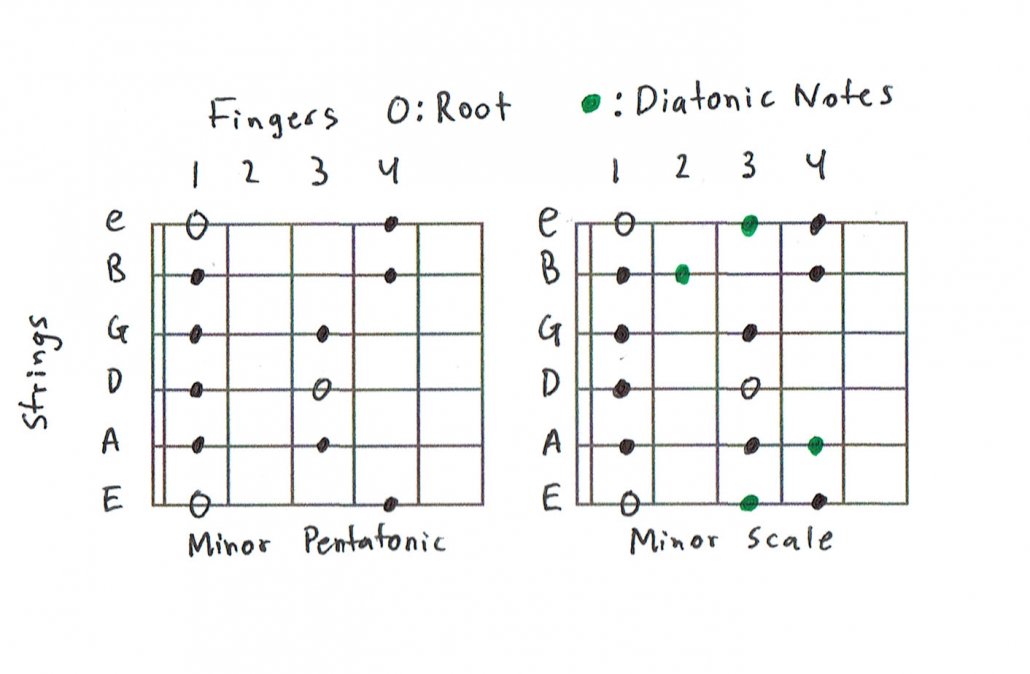Guitar Scales
- Get link
- X
- Other Apps
The Science of Scales
When we talk about scales, we use numbers, or scale tones, to identify the different notes they contains. The names of the scale tones are based on the notes of the major scale and are as follows:
1st (Root) 2nd 3rd 4th 5th 6th 7th
The five additional notes that lie outside the major scale can be identified by adding a flat or sharp to the number name. All twelve notes that can be used to make up a scale are named below:
1st b2nd 2nd b3rd 3rd 4th b5th/#4th 5th b6th 6th b7th 7th
The diatonic scale modes each contain a variation of the 1st – 7th pattern, selecting one version of each number without skipping or repeating. To demonstrate, take a look at the scale degrees that make up a minor scale:
1st 2nd b3rd 4th 5th b6th b7th
Notice how it contains a set of notes to take us from 1st – 7th without repeating or skipping a step. The b3rd is used instead of the 3rd. The b6th is used instead of the 6th. The b7th is used instead of the 7th. These are the differences that give it its distinct sound as a minor scale as opposed to a major scale.
Before moving on, we must discuss a few essential scale tones.
The 1st, which is found in every scale, tells us what the root note is.
The 5th is a counterpart to the root. There is only one mode that does not have a 5th, but contains a b5th instead, giving it the sound of the diminished chord.
The 3rd decides whether the scale is major or minor. Scales with a 3rd (or major 3rd) are major, while scales with a b3rd (or minor 3rd) are minor.
The 7th creates a pull back to the root note and can be used to create tension. For the most part, scales with a major 3rd have a major 7th and scales with a minor 3rd have a minor 7th (b7th).
The one mode that combines a major 3rd and minor 7th creates a great deal of tension that wants to lead back to the major scale.
It is essential to be able to visualize the scale degrees and where they are located in relation to the root note. Check out this video and follow along on your guitar to get a sense of the spatial relationship between the different scale tones.
Scale 1: Pentatonic Guitar Scales
The first scale most guitar players learn is the minor pentatonic scale.
It is one of the most commonly used scales in rock music, with a timeless bluesy sound that is favored in every genre from country to metal.
Below is a chart of the minor pentatonic scale. If you are not familiar with it, take a moment to play up and down the scale and get it under your fingers.
Remember, memorizing scales is all about visualizing and building muscle memory.
This scale can be played over any minor chord progression, just find out what key the song is in (usually the first chord of a progression, but not always), find that note on the low E string, and use that as the root (or first note) of this scale pattern.
But what do you do if the song you want to play is in a major key? You play the major pentatonic scale shown below.
These two patterns provide a great introduction for guitar players new to the world of scales.
But what if you want to start moving up and down the fret board? There are five different positions of the pentatonic scale that link together and repeat to cover the entire fret board.
You should be familiar with the first two positions, as they are the minor and major pentatonic scales.
It is helpful to think of these scales as shapes that lock together like puzzle pieces. Practice moving from one shape to another, sliding up and down to change position.
The fourth and fifth positions should look a little familiar.
They are the little siblings of the first and second positions: minor and major pentatonic scales respectively with their root notes on the A string as opposed to the E string. Knowing where your root notes are will give you greater flexibility when playing leads using these scales.
Here are a few licks that will get you used to moving around using pentatonic scales.
Major and Minor Guitar Scales
Once you have become comfortable using the pentatonic scales, it is time to upgrade to the diatonic, or seven note, scales.
I say upgrade because it’s good to think of these scales as more complex versions of their pentatonic counterparts in which two notes are added to a five note skeleton. Take a look at the major scale and compare it to the major pentatonic scale.
Try adding and subtracting the two new notes to get comfortable with the relationship between diatonic and pentatonic. Think of it as building on a scale you already know. This same relation can be found between the minor diatonic and pentatonic scales.
Just like the pentatonic scales, there are different positions of the diatonic scale that can be used to map out the fret board.
The major and minor scales are just two of the seven different diatonic scales known as the “modes” of the major scale.
If you were to start and end the major scale on the second note of the pattern instead of the first, you would get the second mode of the major scale, known as the Dorian scale. In fact the minor scale is just a major scale that starts and ends on the 6th note.
Since there are seven different notes to start on, there are seven different modes, each with its own distinct sound and proper chordal habitat. But before we can explore them, we need to learn a little bit about music theory and how scales work.
- Get link
- X
- Other Apps



Comments
Post a Comment